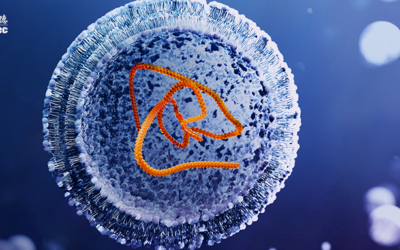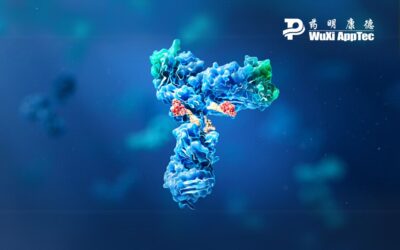Introducing new drug candidates to preclinical testing is a complex and time-consuming endeavor. It can cost developers more than $1 billion and take a decade to bring a new drug to market. Success rates vary depending on therapeutic area, but a recent study from MIT found that, on average, just 13.8% of new drug candidates eventually gain regulatory approval. Choosing the correct approval pathway can decrease development cost and time to market.
The U.S. Food & Drug Administration (FDA) has established specific drug approval pathways under Section 505 of the Federal Food, Drug and Cosmetic (FD&C) Act. U.S. FDA guidance includes three pathways developers can take to gain regulatory approval and legally market a drug in the U.S. They include 505(b)(1), 505(b)(2) and the 505(j) Abbreviated New Drug Application (ANDA).
505(b)(1) vs. 505 (b)(2) vs. 505(j): An Overview
The pathway will determine the scope of clinical and nonclinical studies a drug will need to undergo, as well as the length and thoroughness of it corresponding marketing application.
- 505(b)(1): This pathway is for new drug applications whose active ingredient has never been studied or approved. It is the most comprehensive pathway and all clinical and nonclinical investigations must be conducted by, or on behalf of, the drug development sponsor. These submissions require extensive research and can take several years to complete. They also require a vast amount of resources to gain approval. In 505(b)(1) applications, the original developer owns the right of reference for any data or findings gathered during the original investigation.
- 505(b)(2): This drug application pathway was introduced in 1984 to prevent the duplication of existing studies and to fast-track important drugs en route to market. The 505(b)(2) pathway provides the framework for a more efficient drug development approval process. Just like 505(b)(1), 505(b)(2) requires a drug to adhere to established safety and efficacy standards, but a key difference is that sponsors will use the 505(b)(2) pathway if they are modifying a drug that has already been approved. “Modifications” in these cases would include reformulating the drug or changing its route of administration, dosage, strength or indication. The 505(b)(2) pathway is only appropriate if a sponsor can demonstrate something innovative in a previously approved molecule. Safety and efficacy documentation must be included in the application but developers can rely on previous investigations to make their case. These studies may not have been conducted by, or on behalf of, the new developer and they don’t need a right of reference. Developers can also rely on published articles in peer-reviewed journals to support the application. They must simply demonstrate that the drug candidate formulation works similarly but has a different use or is effective in a different way in their application.
- 505(j): Reserved for duplicate, or generic, versions of previously approved drugs, this pathway includes applications that demonstrate how a proposed therapeutic is identical in active ingredient, dosage form, strength, route of administration, labeling, quality, performance characteristics and intended use. Applications must include sufficient information to demonstrate bioequivalence to a previously approved drug. These drugs may contain minor differences from the approved drug as long as the differences do not require additional research to establish safety and effectiveness.
505(b)(1) vs. 505 (b)(2): Pros & Cons
The 505(b)(1) regulatory pathway is the framework under which most drugs were developed and marketed. The comprehensive and thorough process rquired in 505(b)(1) applications sets the standard for safe and effective drug development. But that same process takes a significant amount of time and resources to come to fruition, which can make it prohibitive for drug developers.
The 505(b)(2) pathway offers a more straightforward process and comes with inherent advantages. Developers can use data from the original 505(b)(1) submission without having to replicate clinical and nonclinical studies. This strategic difference dramatically decreases the cost, approval timeframe and time to market. 505(b)(2) also carries less risk because it leverages the safety profile that was completed (and approved) with the original 505(b)(1) application. The 505(b)(2) pathway would not be possible without 505(b)(1), but since its inception, it has revolutionized the introduction of safe, new drugs to market.
The Bottom Line
There is a time and place to use the 505(b)(1) pathway for regulatory approval. It is the only option for NDAs and has a long track record of success. But the 505(b)(2) pathway offers efficiency and cost savings without compromising safety, making it an extremely advantageous option to consider.
The drug approval path can be a long and arduous one. There are many factors to consider and timelines to coordinate before embarking upon it. It is easy to lose your way without proper guidance. That is where experienced laboratory testing partners can be integral team members. They can recommend the regulatory pathways that make sense for your molecule and provide invaluable regulatory guidance.
As a global company with operations across Asia, Europe, and North America, WuXi AppTec provides a broad portfolio of R&D and manufacturing services that enable the global pharmaceutical and life sciences industry to advance discoveries and deliver groundbreaking treatments to patients. Through its unique business models, WuXi AppTec’s integrated, end-to-end services include chemistry drug CRDMO (Contract Research, Development and Manufacturing Organization), biology discovery, preclinical testing and clinical research services, helping customers improve the productivity of advancing healthcare products through cost-effective and efficient solutions. WuXi AppTec received an AA ESG rating from MSCI for the fourth consecutive year in 2024 and its open-access platform is enabling around 6,000 customers from over 30 countries to improve the health of those in need – and to realize the vision that “every drug can be made and every disease can be treated.”


